It was just one of those Wednesdays. The kind where you find yourself with a day off in the middle of the week, and you feel the need to get out and just look at the world around you.
On this occasion I suggested to Miss Jane that her and I should hop into Ruby the Exxy, and head down the highway to the township of Queenscliffe*, via Geelong. With a tank full of fuel and barely a map between us, we headed out onto the Princes Freeway and out of Melbourne.
The sun was shining and it looked like a lovely day was ahead of us. We stopped by the suburb of Parkville on the way, so that Jane could check out the house that is used in the TV series ‘Miss Fisher’s Mysteries’ – a personal favourite of hers. With that done we then were on our way south-west of Melbourne to the Bellarine Peninsula.
The traffic on the Princes freeway was light and it was a good drive at first. But as we passed what used to be the Point Cook airforce base, the sky greyed over. By the time we got to Geelong the sky was a looming grey mass that looked capable of a fair bit of rain.
A sign to the side of the freeway alerted us to a ‘Vintage Market’ that was up ahead. This sounded like the kind of place Jane and I would love to check out, so we turned off the freeway and had a look. We were glad that we did!
There were actually two huge vintage markets right next to each other, and both were quite different in character. The first we visited was ‘The Vintage Shed’, which was filled wall to wall with stalls selling interesting old gear. Jane and I spent about an hour or so in this place, gawping at appealing furniture pieces that we would love to have, and all kinds of fun stuff. Including some very seedy – even alien – looking residents.
Probably unsurprisingly, there were also plenty of typewriters to look at to. However – I felt like calling this place ‘The house of the $90 typewriter’, as pretty much every machine I looked at was either placed at $90 or so, except for one. Suffice to say, none of these came home with me.
I was almost interested in the Remington 5. It felt that it had great potential and could clean up nicely. But at $95 for a machine with a busted draw band, I just couldn’t justify to myself sliding the cash over the counter.
And finally….
I find it amazing that the sellers of these machines don’t even bother to spend a bit of time cleaning these typewriters off. I mean seriously, how hard is it to just rub a wet rag over something for a few minutes, and give it a bit of a vacuum.
I always find Geelong interesting. It is a town that grew up in parallel to Melbourne during the gold rush of the late 1800’s, and as such has a lot of history in its streets. However, while Melbourne became a centre for commerce and governance, Geelong became an industrial hub. The town’s largest feature is the impressive rail network that reaches out to all the ports located in Western Victoria. The city was also once a central transport hub for raw materials being transported from the state of South Australia – before SA built their own steelworks in the early 1900’s. As well as the being the gateway to Melbourne for other coastal industries – such as whaling.
Geelong is impressively industrial. The city is filled with the ghosts of an economy that was formed around breaking the ground open and building upwards to the sky. Sadly Geelong is in a transition phase with its economy and is in that painful stage of watching its manufacturing industry head overseas. Ford – the car manufacturer is one of the last to go, and they are shutting down their massive engine plant sometime in 2016. But others has passed long before, and Geelong is filled with the relics left behind.
Today, Corio bay – the bay that Geelong’s port was built in, is largely silent, and not the busy hub filled with giant ships that it used to be. A few ships still visit there, but they belong to the oil refinery which is also shutting up shop soon. The city seems to feel, in some ways, that it is on borrowed time and is desperately looking for a way to build a new economy and grow in a new direction. However you can almost feel the anxiety for the city’s future in the air, and many of the streets and buildings look decayed as investment shifts from maintenance to survival.
The second vintage place we visited was right next to the ‘Vintage shed’, and it reflected a lot of this transition. It wasn’t the same setup as the other place, and was full of things that reflected much more of Geelong’s real character – an industrial landscape with beautiful gems of the past locked away, waiting for a new future.
Only one typewriter was to be found here, but I enjoyed exploring this place a lot more than the market shed.
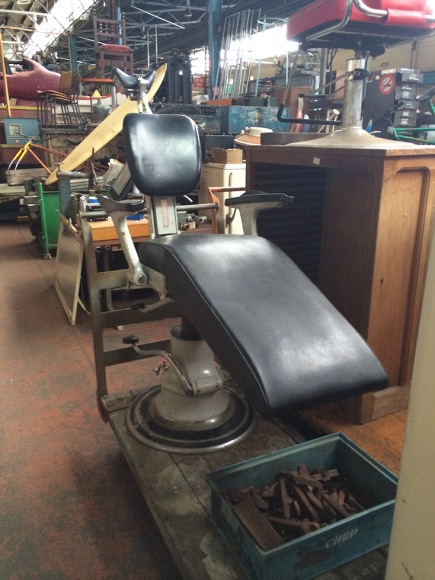
Probably the rest of the dental setup. But the tools at the foot of this patient bench made it look very sinister.
Jane and I got back into the car and drove on, but were quickly distracted by signs pointing us to the ‘National Wool Museum’. As Jane was an avid knitter, she insisted on this being a ‘must-see’ stop for us, and to be honest was worthwhile visiting.
The museum is located in one of the oldest buildings in Geelong – an old bluestone warehouse that was once used to store wool. It has been impressively converted into a museum by the local tourist board, and – on this day at least – filled with eccentric volunteers that were only too happy to answer our questions.
One of the most impressive displays in the building is a two and a half storey tall mechanical loom that produces carpet runners out of wool. It has been meticulously restored, and is still being operated by a volunteer that used it back in his working life. It is a loud and ernest piece of history that appears determined not to die. I really enjoyed watching it in action, and the volunteer took time to describe to use how it works.
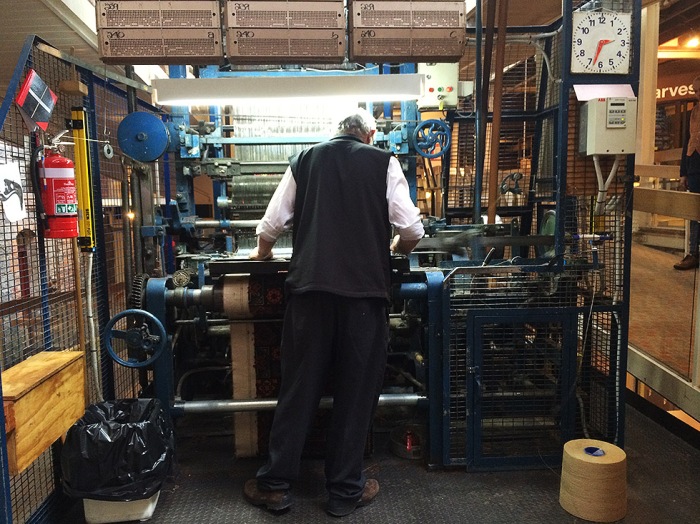
The front of the mill. This machine extended back about 10 meters behind this, and up about 2 and a bit storeys in height.
While the museum celebrated golden years of the wool industry in Geelong, it certainly pulled no punches when it displays how hard the people that were involved with it had to work, and the horrific damage european settlers caused by introducing sheep into Australia.
Sheep not only tore up the landscape, but like almost every other introduced species they bred like pests – and by the late 1800’s there were too many sheep than anyone knew what to do with them. As such the wool industry collapsed, and sheep were rounded up to be used in the manufacture of other products until the industry recovered
The plight of the hard-working sheerer was also somewhat documented here, but as much of the history of these men is part of common Australian folk-lore, they didn’t dwell too much on this detail.
The museum also included an impressive display of some of the machinery used to process and weave wool into a usable material. Jane was particularly impressed with a sock knitting machine that visitors are allowed to actually operate, as she has spend many hours knitting socks herself, and was mesmerised by how easy it was to just hand-crank out a pair on this machine that dated from the mid 20th century.
Almost bizarrely, in the middle of the museum the curators have gone to great lengths to construct an early 20th century workers cottage that displayed how the people that worked at the mills lived. They decked it out with all the furnishings of the era – complete with school uniforms drying over the heater, and partially completed knitting projects sitting next to the lounge chair with some magazines. The kitchen is also complete and looks as though it could function. On the table were newspaper clippings from the mills, and homework from the children.
While it didn’t look different to many of the places I remember from when I was younger, it occurred to me that children attending this museum with a school group would feel the contrast of this environment with how they live today a lot more than I did. Compared to the minimalist furnishings of the heavily gadget-lain homes of today, a house like this must feel almost alien in existence to them. But to me it felt warmer and more comfortable than many the homes of today.
With our wooly adventure behind us, we headed out to what was once the luxury get-away location for the wealthy and regal in the late 19th and early 20th century: Queenscliff. (*Queenscliffe with the ‘e’ on the end refers to the township located in the Queenscliff area).
Today Queenscliff is a relatively minor tourist area for people that are interested in the history of the area. A couple of kilometres away the famous surf beach of Ocean Grove now gets a lot more interest from the public, and is now considered the playground for the rich – with the hills around the beach being filled with luxury houses that are usually only occupied during weekends.
Queenscliff has an impressive array of late 19th century houses that were built to board the beach-going wealthy that arrived via the train line that was built from Geelong and Melbourne. Prior to that, the rich typically arrived via a ferry from the capital. Both the ferry dock and the train line still exist – with the train station still being maintained in its original condition. As such the area is often used for filming historical drama.
Queenscliff also has a huge historical fortress that was built up after the Boer war because people feared that the then capital of Australia (Melbourne) could be invaded by sea. Queenscliff is located at the heads of Port Phillip Bay – which Melbourne is built on, and made it the ideal spot to defend the city from the sea. Similar fears caused the fort to be further expanded during both World War 1, and World War 2.
Sadly the weather was against us. As we walked to the beach, I looked over my shoulder and could see heavy clouds coming up behind us. It wasn’t long before we started to feel the familiar change of temperature of an oncoming storm, and the horizontally travelling drizzle the preceded heavy rain. I took a few photos and we looked around the ferry terminal before we returned to the car and headed back to Geelong.
We got back into Geelong at about 5pm, and noticed that the ‘Mill Antique Market’ on the outskirts of town was still open. It looked warm – and more importantly dry, inside so we pulled into the car park and headed in. As we walked through the doors we were greeted by a friendly old blue heeler (dog) who sniffed us out as we entered the building before falling onto the floor in front of the feet of one of the shop’s attendants.
The Mill market was similar to the Vintage Market that we had been too earlier, in that it was made up of a variety of stalls that were held by private sellers. Like that other market it was also a great little hunting ground for typewriters. This time however there seemed to be a fair bit more variety in the prices.
And this time around I bought a machine. See if you can guess which one.

Another Smith Corona in a huge plastic case, with ‘I’m made in the 70s’ written all over it. Sadly, this guy had a busted escapement, despite the $125 price.
Jane and I made a few purchasers that day, and with our booty loaded into the car we headed back towards Melbourne. As we exited Geelong onto the Princes Freeway the clouds opened up with an impressive downpour, and soon we found ourselves with our road visibility reduced down to about 100 meters – with every dickhead driver that could be found in Melbourne surrounding us. The drive home was tough, but we managed to get back without any major incident – but with a lot of swearing.
We spotted a few other antique locations to check out in Geelong, and we’ve vowed to return – If anything so we can check out the cliffs at Queenscliff without the threat of the heavy day-ruining clouds overhead. But despite the rain, we had a great trip overall, and I even have a new typewriter to play with!
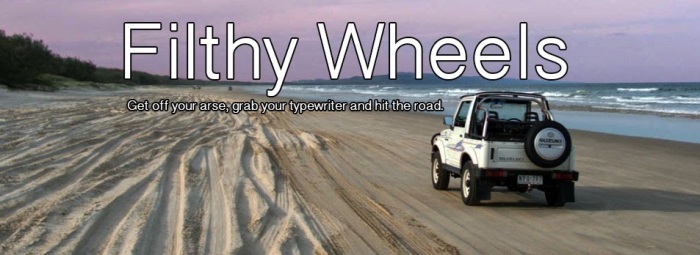
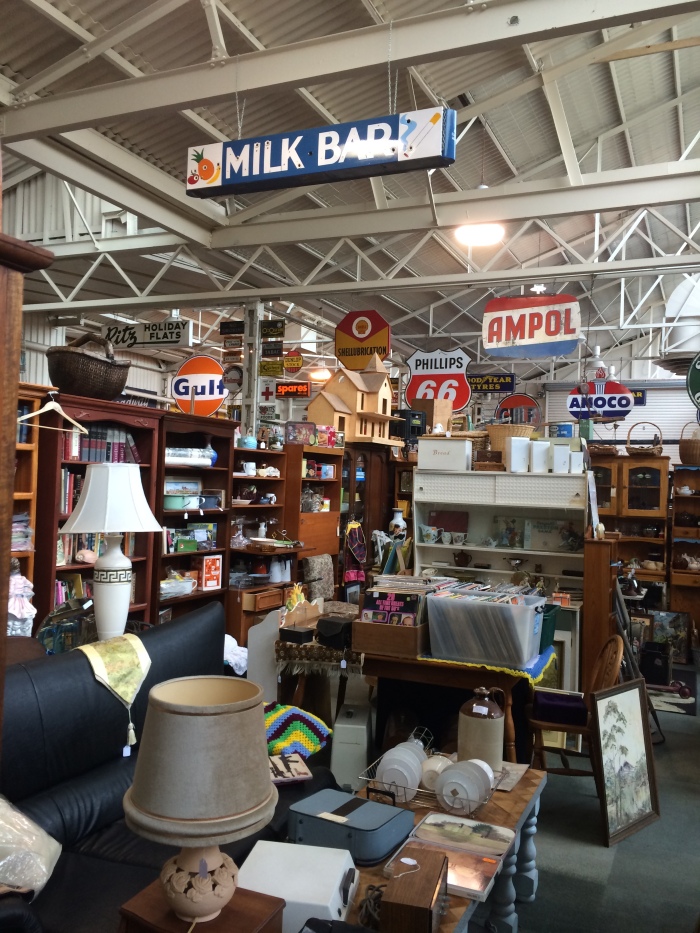
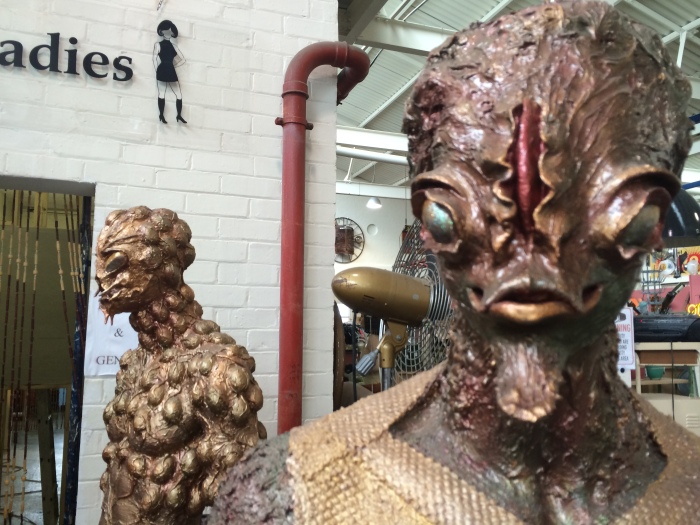
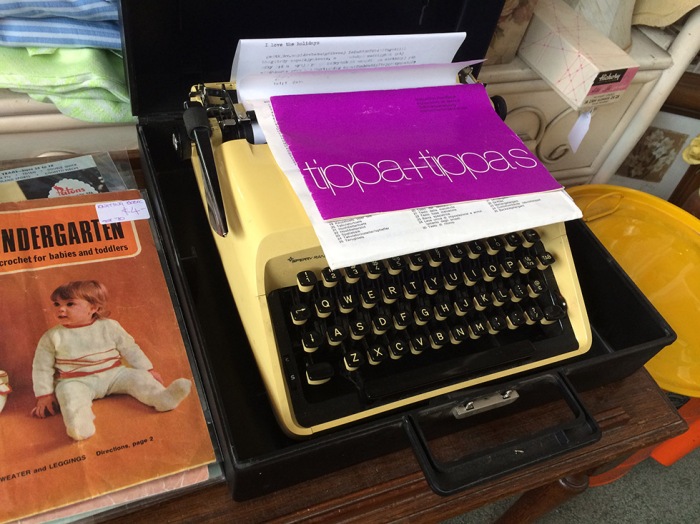


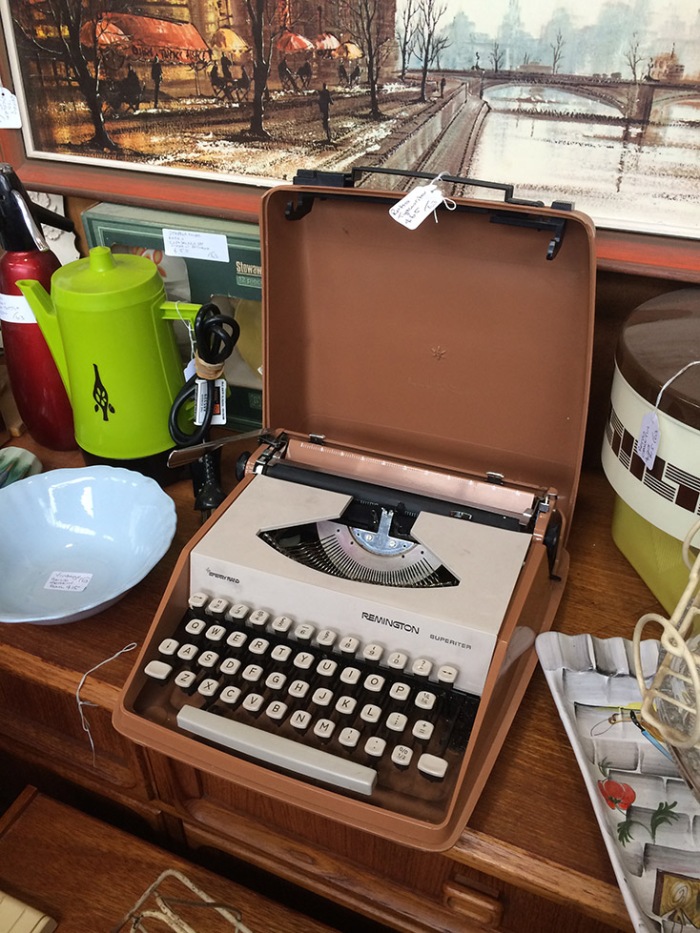
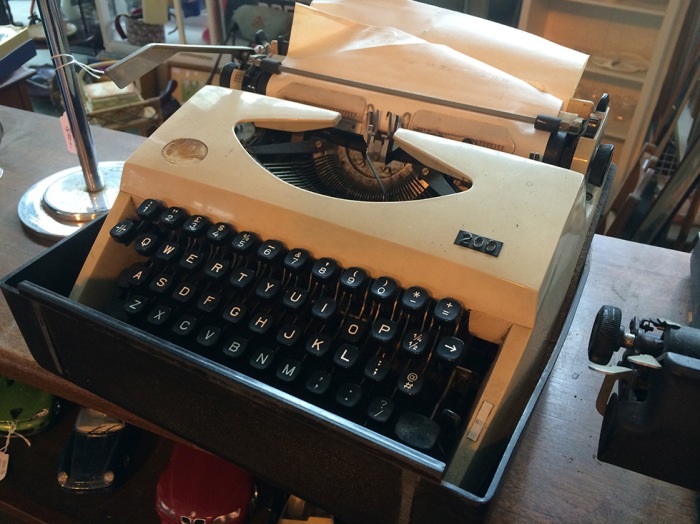
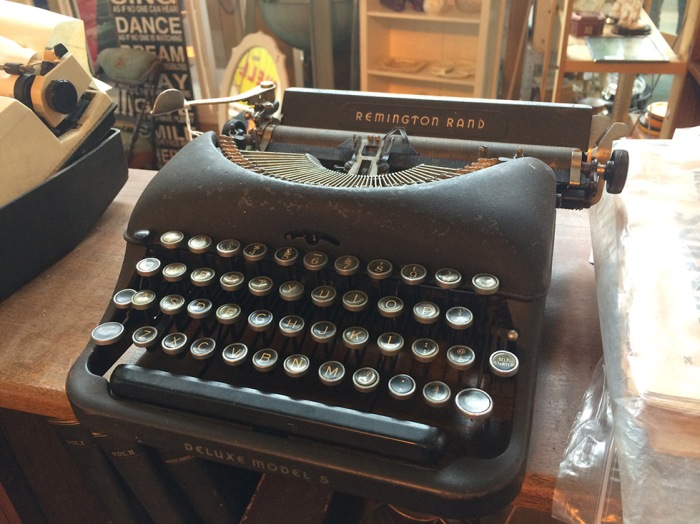

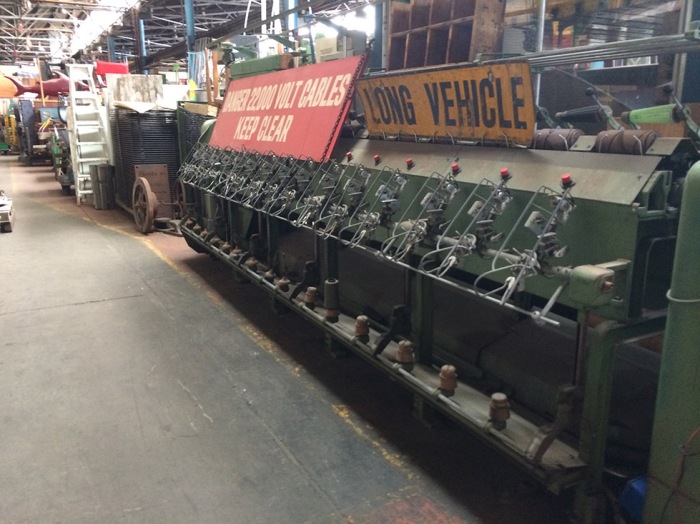
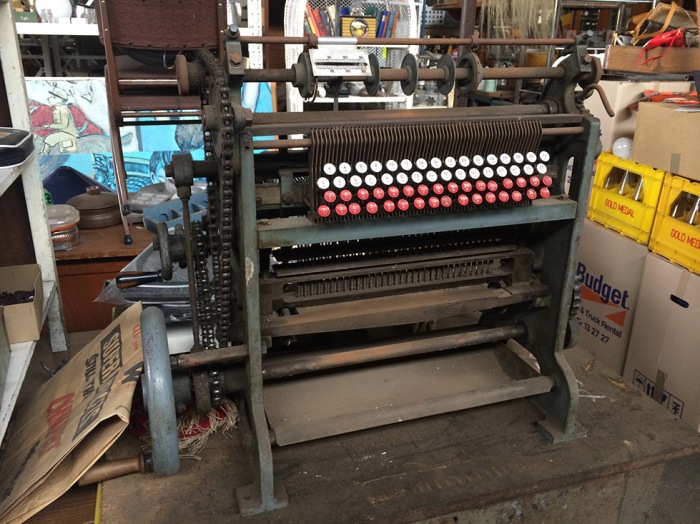

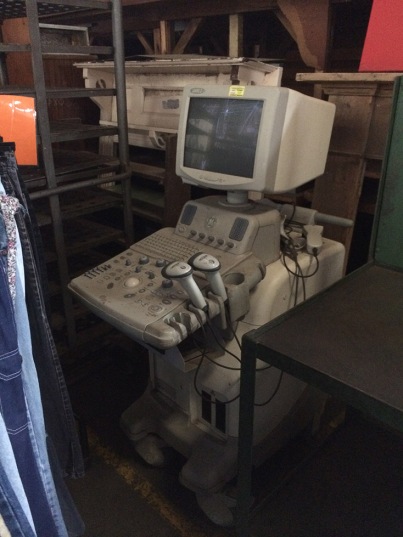

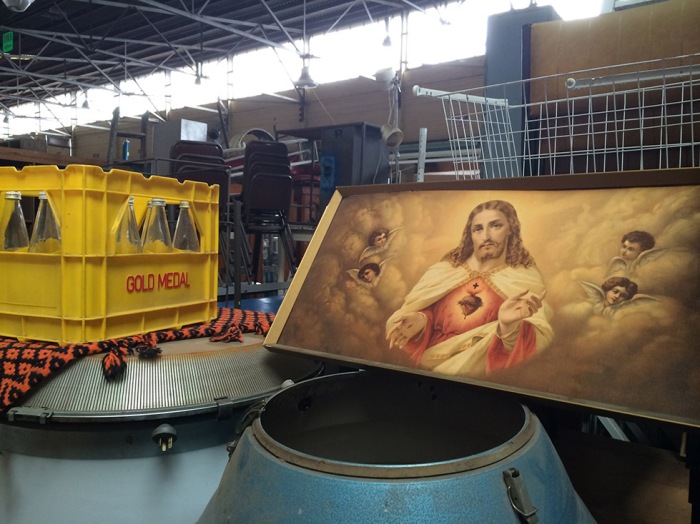


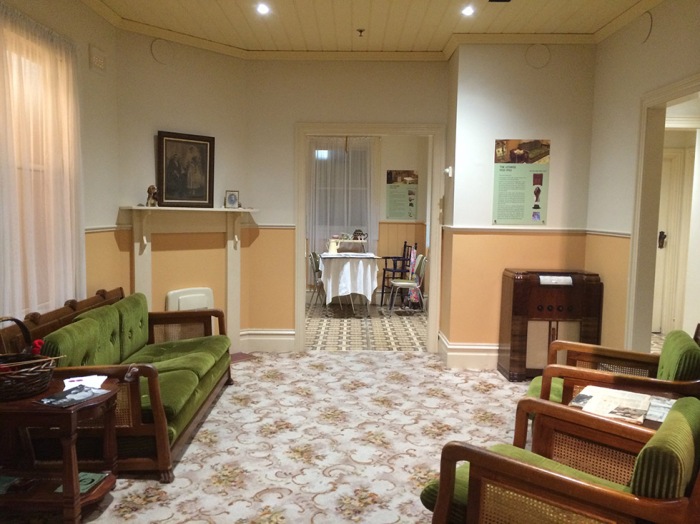
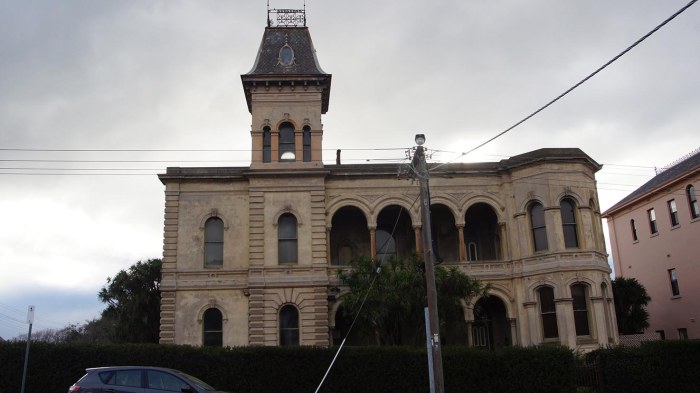
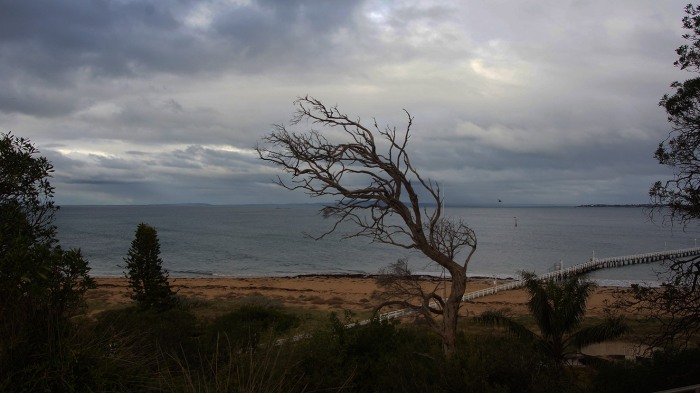



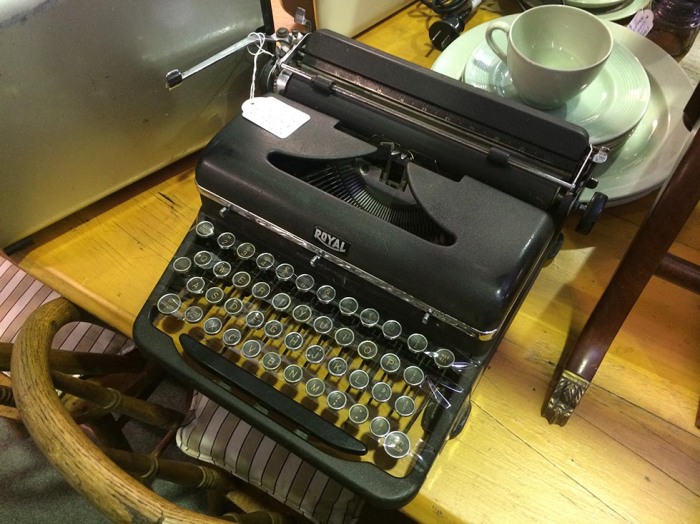
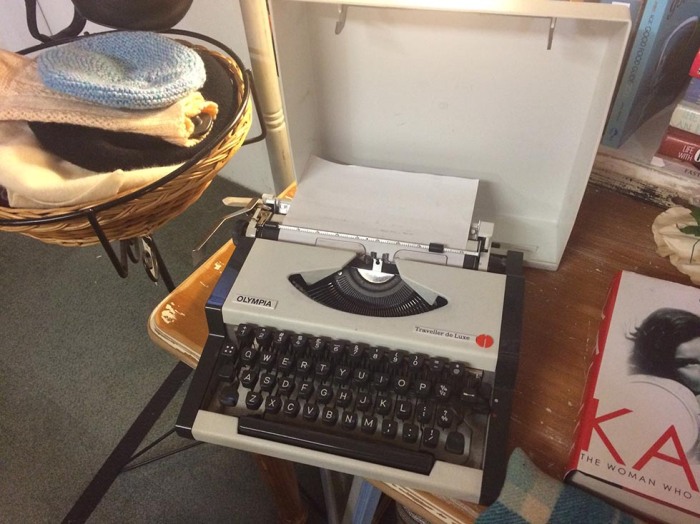

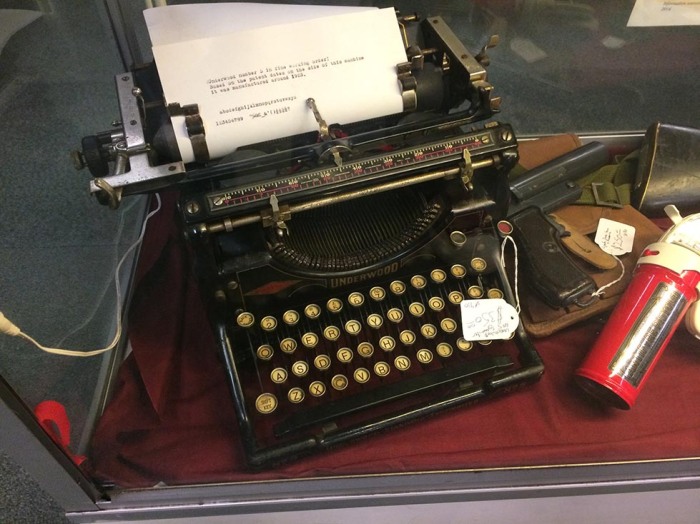
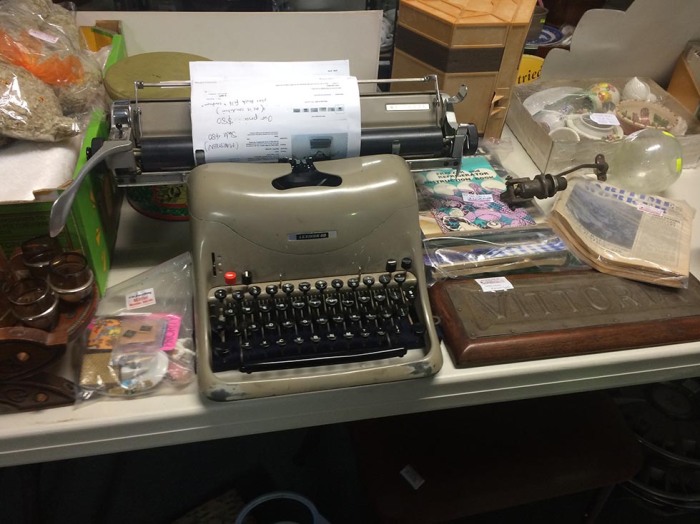


That second store really looks interesting. Even though I never buy any huge things like that, it’s always fun to find dentists chairs and old pump organs and things, rather than the typical housewares.
Here in Washington we get to enjoy all the benefits of an angry grey sky without the pounding rain. It’s always so very grey there, which I love.
LikeLiked by 1 person
IT was a lot more interesting, and what you can’t see in these photos are the huge industrial items – like presses and other manufacturing machinery – that would have been trucked in, and seemed oddly out of place. They just loomed above everything. I’m definitely going to visit there again – if anything just to find myself a workbench when I have the time.
Ah! So that is how you seem to have such great window light for your photographs!
LikeLike
I wonder if there are any places like that in Detroit; it sure has more than its share of declining industry!
It’s cloudy pretty often here, but even more so on the proper Pacific coast (Tacoma, though on saltwater, is pretty far inland). I actually think I get the best lighting on sunny days in the afternoon—the apartment faces east so we get strong, but indirect, light.
LikeLike
The Aristocrat seems to be the best bet for me here…
LikeLike
Probably the best candidate for the price, but actually no!
LikeLike
Interesting odds and ends but I see one thing: Lexikon 80!
LikeLike
And Jesus!
LikeLike
As for Jesus, I just spun around some heavy industrial equipment and found him sitting in a very odd dark little corner.
LikeLike
Ha ha ha. You and your Olivetti love!
LikeLike
I would guess you picked up the Aristocrat. (:
PS. I think those South African fellas were called “Boers”.
LikeLike
GAH! Late night typing and a foggy brain. Fixed!
I was tempted by the Royal, but nope! Not on this occasion.
LikeLike
Thanks for these travel-posts – peeks into far off places. Really like the furnished period home (with the radiogram in the corner). Quietly and gradually, homes and rooms have changed a lot over the decades.
Oh and the Royal Portable. For sure. (These are oddly and disappointingly rare at this end of the globe. (Unlike Lexikon 80s.))
LikeLike
I did consider it. But no! Something else came home with me. And it wasn’t the lexicon either. I was very impressed with that reconstructed home. Someone had gone to an awful lot of trouble for it.
LikeLike
I would have guessed the Aristocrat too, but I see that’s wrong, so it must be that you got the $45 Traveller. It was the best combination of quality and price, though still not a steal.
LikeLike
Not a steal… Unless it has a different typeface that would make it reasonably re-sellable.
LikeLike
Indeed. But…… there was a little more to that Traveller!
LikeLike
I would have thought the Royal, but you said ‘no’. Then I thought the Lexicon, but that wasn’t it either. I’d say the Traveller or, believe it or not, the orange Kmart thingy? To pull apart completely and rebuild. As an exercise.
LikeLike
Nice, you’ve touched an Underwood 3! Looks great too, nice decals. But looking at the price, I don’t think that’s the one you brought home with you…
LikeLike
Oh right, multitasking again. -_-
I love these roadtrip stories you write. There seem so many historical places in your neighbourhood. Amazing!
LikeLike
Thank you. I think every neighbourhood does – I just like to pay closer attention to it, and I’m fascinated by how cities got to where they are.
LikeLike
Me too, but out here a lot gets demolished and the stories leave with the knocked down buildings. Very sad.
LikeLike
They are great machines. I just wish I had one. Mind you, not at that price… OUCH!
LikeLike